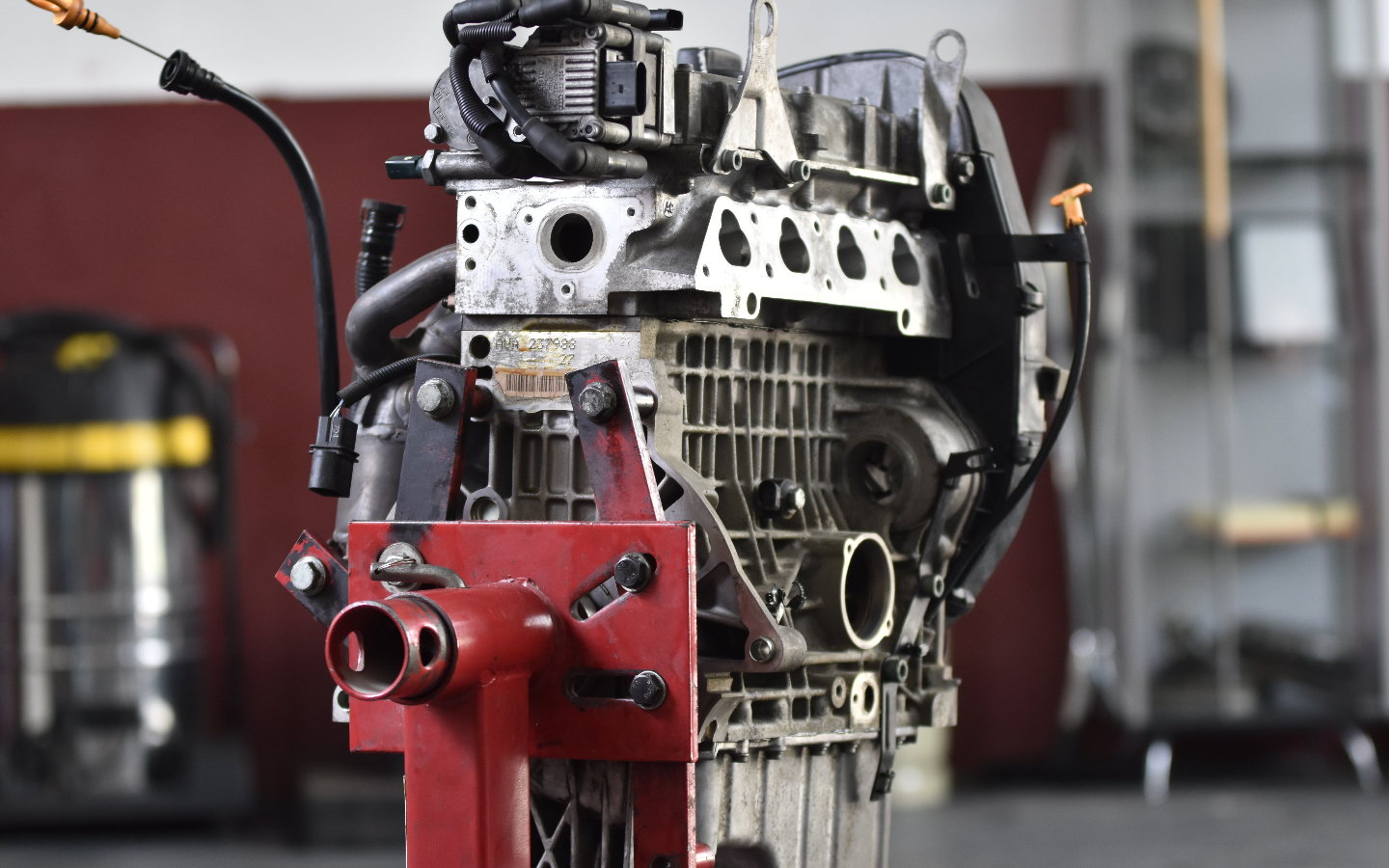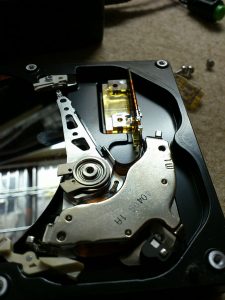The choice between permanent magnet synchronous motors (PMSM) or induction motors is becoming increasingly important in a variety of industries. Understanding the advantages and differences between these motor technologies is critical to making an informed decision. The purpose of this article is to outline the key advantages of PMSM over induction motors.
PMSM and induction motors are used in a wide range of applications such as industrial automation and renewable energy systems. While both motors are used for similar purposes, they are quite different in terms of construction, operation and performance.

The paper outlines the benefits realized with PMSM motors over induction motors and ascertains their differences. It probes into operating principles, efficiencies, control capabilities, and applications for PMSM motors. By understanding these aspects, the reader will understand why the PMSM technology is gaining momentum and, in all respects, outpaces induction motors. Several factors have to be kept in mind when choosing between a PMSM motor and an induction motor. By comparing these motors, we can determine what advantages PMSM provides in specific industries and applications.
The operational and structural principles of PMSM and induction motors are quite different. A PMSM consists of a permanent magnet rotor and a stator with windings. Here, the magnetic field developed by the permanent magnet rotor interacts with the magnetic field developed by the stator windings. The torque developed due to such an interaction drives the rotor. There are stator windings which are fed with AC and thereby producing a forward-moving magnetic field, so the rotor moves at the same pace as it does; the rotor follows the rotating magnetic field.
The induction motor also includes a rotor and a stator. The rotor may be either wire-wound or squirrel-cage. In operation, AC energizes the stator windings, creating a rotating magnetic field in cooperation with the rotor. The result of this cooperation is torque applied to the rotor.
Compared with induction motors, the most remarkable difference is that the latter has quite a different structure of a rotor. While the motor under discussion features permanent magnets on the rotor creating its own magnetic field, the rotor in another type of motor design is never magnetized. Rather, it requires a rotating magnetic field by the stator windings.
This indeed accounts for certain advantages of a PMSM. Firstly, a PMSM, with a permanent magnet rotor configuration, ensures that its power is dense and highly efficient. The magnetic field of the permanent magnets is so strong that it requires less power to develop the same torque as an induction motor. Secondly, PMSMs allow for precise control of the speed and position of the motor due to their high control accuracy. Third, PMSMs have higher overload capability compared with induction motors due to the high torque-to-inertia ratio.
By contrast, induction motors are easy to design. They are appropriate for low to medium power applications that do not call for high control precision and efficiency.
Some of the factors that make PMSM superior in comparison to induction motors are its efficiency and energy consumption. PMSMs have a few efficiency and energy advantages over induction motors.
PMSMs are more efficient relative to induction motors because, in the case of PMSM, electrical energy is converted to mechanical energy through a permanent magnet rotor, which is relatively efficient. This is because there are no rotor losses, such as rotor resistance and rotor iron losses found in induction motors. This enables PMSMs to operate with higher efficiencies, which equate to less wasted energy and reduced operational expenses.
PMSMs have a higher power factor compared to induction motors. Power factor is the measure of how effectively electricity is used, and the higher power factor of a PMSM means that it draws less reactive power from the grid, reducing energy loss and generally improving overall system efficiency.
PMSMs have the capability for the successful recovery of energy at braking and deceleration: During such operations, the PMSM with the technique of regenerative braking retransforms the mechanical energy output due to its braking into electrical energy. Therefore, it may feed it to the power supply again or may accumulate for future use. It prevents dissipating energy to heat. It minimizes energy wastage; hence, this will optimize the efficiency of the system.
PMSM maintains high efficiency even at low speeds, making it suitable for applications requiring precise control of motor speed. Unlike induction motors, losses are high at low speeds, while for the PMSMs, efficiency is maintained over a wide range of operation speeds. This makes the PMSMs ideal for applications needing variable speed control with the ability to maintain high energy efficiency.
Because of their higher efficiency and better power factor, for the same output power, PMSMs require less power consumption compared to induction motors. This reduction in energy consumption saves not only the cost but also helps in environmental sustainability by reducing the overall demand for energy and carbon footprint.
These put together reveal that PMSMs are more efficient, with better energy utilization compared to induction motors. Higher efficiency, higher power factor, regenerative braking capability, variable speed control, and lower energy consumption make them preferred for energy-efficient, cost-effective, and environmentally sustainable applications.
The main factors where PMSM differs from induction motors are control and accuracy. In contrast, with induction motors, the PMSM is in a more competitive position when considering control accuracy.
Having low inertia, the high torque-to-inertia ratio endows PMSMs with fast response times. That is to say, it is fast in response to changes in load and speed commands, thus best for high-performance applications characterized by fast acceleration and deceleration.

The precise control of the motor position in PMSM allows for proper sensing of the position. For this reason, the PMSM is capable of maintaining stable and accurate positioning even at low speeds. Applications for which highly accurate positioning is crucial can be performed easily because of this feature.
The permanent magnet rotor structure of the PMSM contributes to a low torque ripple. Essentially, torque ripple is the measure of variation in torque output at motor rotation, and low torque ripple in PMSM means smooth and stable running of the motor, which makes it very suitable for applications that require low vibration and noise.
PMSM operates on a closed-loop control system to offer a greater circle of control with better accuracy. A closed-loop control system continuously monitors the speed and position signals of the motor for better performance. This allows for greater motor efficiency, energy savings, and also improves overall system reliability.
PMSM finds an ideal application in those cases requiring high precision of control and stability of operation due to high precision in motor speed and position control, fast response time, precision in position sensing, low torque ripple, and the ability to work in a closed-loop control system.
The PMSM has some merits in the application of textile industries compared with induction motors. Firstly, because the response time is fast, PMSM can satisfy the requirements of rapid process variation during textile production. High control precision and good positioning performance can also satisfy the high-precision requirements of textile processing. Besides, permanent magnet synchronous motors have higher efficiency and achieve energy-saving during textile machinery operation.
PMSMs have many significant advantages over induction motors in mining applications. As the PMSM itself is robustly designed, it withstands such harsh mining conditions as vibration and harsh environments with heavy loads. With high torque density and variable speed operation capabilities, permanent magnet synchronous motors are ideal in mining equipment requiring frequent starts, stops, and changes to operating requirements.
PMSM has great advantages in the petroleum industry applications. The high power factor reduces the harmonic pollution on the grid, which avoids common problems encountered with induction motors. Also, high torque and good precision from PMSM can be advantageous in applications with precise flow control and pressure regulation. Besides this, compact size and light weight enable PMSM for space constraint installations in the petroleum industry.
In other words, the application of motors within industries contributes a lot towards achieving efficient and reliable operations. As much as induction motors are considered popular, they are associated with various limitations, which can reduce performance and reliability. However, PMSM have advantages which make them superior to induction motors in industries like mining and petroleum. PMSM has the advantages of faster response time, higher control accuracy, higher efficiency, and higher torque density. In this way, the solution value of PMSM is increased; thus, it improves the whole process and production efficiency while saving operation costs. Appropriate selection of motor type and control strategy regarding specific requirements and environmental conditions plays a key role in optimum performance and reliability under real-time applications. In general, permanent magnet synchronous motors are an important technological achievement and a great future for many industries.
